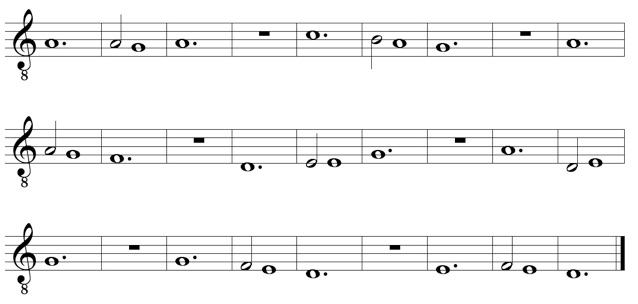
Isorhythmic tenor from the first part of the Kyrie of Machaut's Messe de Nostre Dame (c. 1360). A color of 28 notes is arranged with a four-note talea pattern which repeats seven times.


Isorhythmic tenor from the first part of the Kyrie of Machaut's Messe de Nostre Dame (c. 1360). A color of 28 notes is arranged with a four-note talea pattern which repeats seven times.
ΙΣΟΡΗΨΤΗΜ
Isorhythm (from the Greek Isos meaning “identical” or “equal” and rhythmos “rhythm"), is a 20th century term used to describe a compositional technique that employs periodic repetition or recurring rhythmic patterns, primarily in motets of the 14th and 15th centuries. It consists of an sequence of durations or rhythmic patterns, called the talea (Latin "a cutting"), which is usually repeated within a tenor melody, and a repeated melodic pattern , the color, whose pitch content or series was not necessarily the same length as the talea. Usually the talea were shorter, so that one might hear the talea repeated many times while only hearing two or three repetitions of the color during the course of a motet. Thus they created a complex overlapping effect, as the talea would start each repetition at a different point in the sequence of notes in the color.
The talea was often a rhythmic mode. The color of isorhythm may be compared with the tone row of the twelve-tone technique's fixed order of pitches. The modern musical innovation of integral serialism taught in the classes of Olivier Messiaen sprang from a study of the 12 tone compositions of Anton Webern and the isothythmic organization found within the motets of Guillaume de Machaut and Guillaume Dufay.